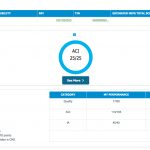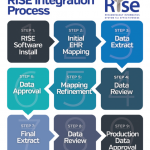
Tashatuvango/shutterstock.com
Quality assurance and quality improvement (QA/QI) work makes sense to focus on. However, finding the time and resources for QI projects is not always easy. Until now, the business case for QI in rheumatology practice has not always been clear.
However, this is changing with implementation of the Medicare Access and CHIP Reauthorization Act (MACRA) of 2015. MACRA brings an aggressive timeline for a Merit-Based Incentive Payment System (MIPS) and for Alternative Payment Models (APMs), such as accountable care organizations (ACOs).1
Under MIPS, a rheumatology practice will be graded according to a MIPS Composite Score that addresses quality, clinical practice improvement activities, advancing care information (this replaces meaningful use) and cost.2 Six quality measures, including an outcome or high-priority measure, must be demonstrated.
“For rheumatologists to be successful under these payment reforms, it will be critical to understand your current state with these quality measures and then implement quality improvement work that allows you to demonstrate improved performance in these specific areas,” explains Sonali Desai, MD, MPH, a rheumatologist and medical director of quality and ambulatory patient safety for the Department of Medicine at Brigham and Women’s Hospital in Boston.
Mastering the QI Process
 Although 2017 is considered a transition year for MIPS—meaning physicians can choose their level of participation—this is an important time to be establishing QI work, according to Dr. Desai.
Although 2017 is considered a transition year for MIPS—meaning physicians can choose their level of participation—this is an important time to be establishing QI work, according to Dr. Desai.
She says rheumatologists understand the importance of quality and have many ideas for QI; however, it is far more difficult to implement the work to improve quality within the busy routine of daily practice. “This requires a dedicated infrastructure and team to make happen, and the time, resources and financial support for this are not always readily available.”
She shares these key elements that must be in place for successful QI work:
- Mobilize commitment by building a QI team, with designated tasks for an agreed-upon goal. The team should include a leader who can ensure project buy-in from others.
- Support active listening among team members to agree on a quality measure to improve and to allow open dialogue for any expressed concerns about the project before it begins.
- Set a timeframe for project milestones.
- Establish a clear metric to improve and confirm the method for collecting the data, including what type of data to collect, how to collect it, what improvements to make and how to communicate the improvement data back to the team.
- Have a plan in place for regularly monitoring improvement practices to sustain the improvement.
“Effective quality improvement doesn’t have to be complicated; it can begin with a list of patients and a data point to track,” she adds. It can involve a simple Excel spreadsheet to track patients and a column for whether a metric is being met or not. For example, an improvement project her team took on several years ago focused on patients who were on immunosuppressive medications and who needed a pneumococcal vaccination.3 A mail merge was used to identify patients who were coming in for their routine rheumatology visits, and a printed order sheet for pneumococcal vaccination was added to these patients’ files and stapled to the paper billing sheet.


